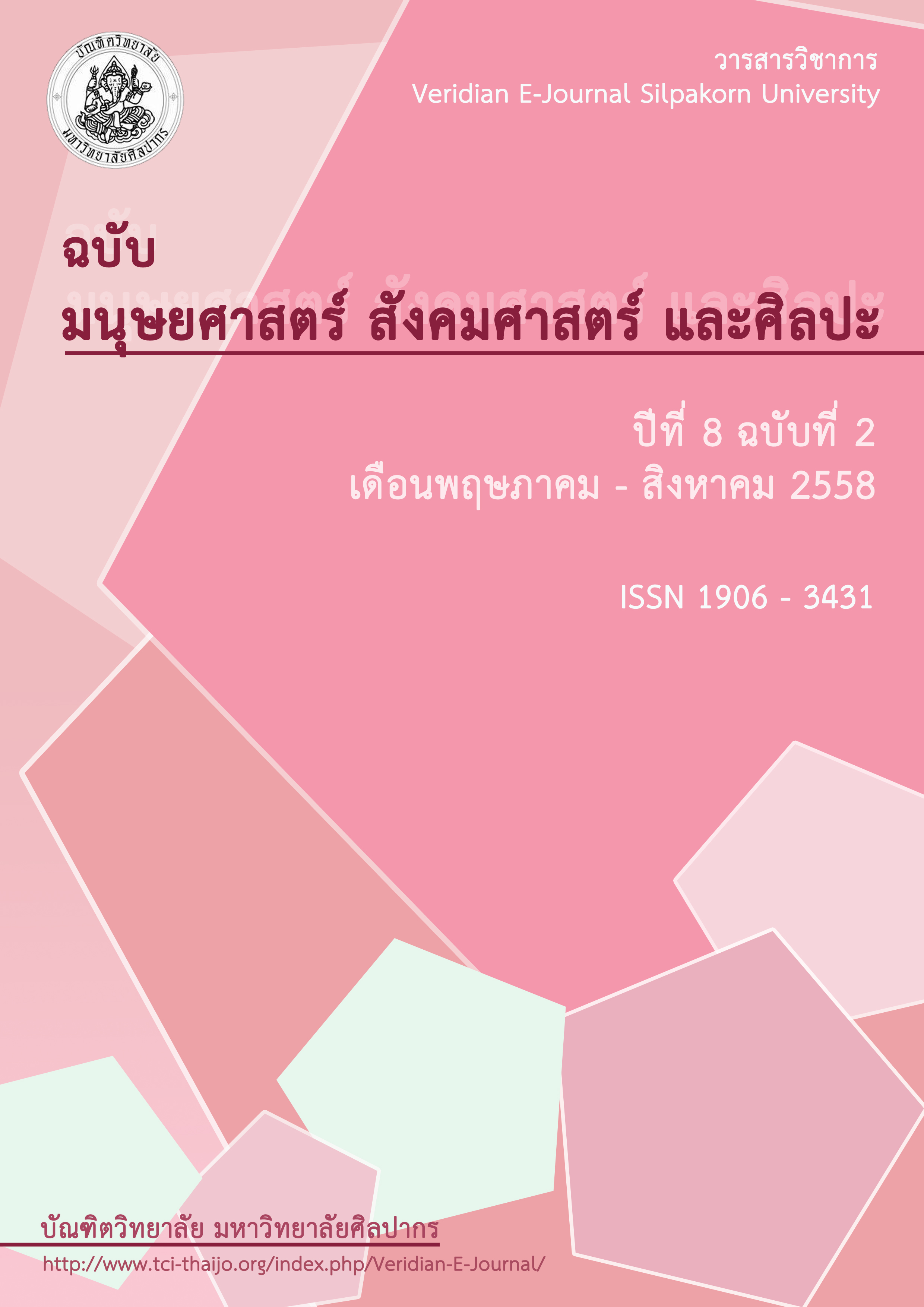การพัฒนาบทเรียนคอมพิวเตอร์ช่วยสอน เรื่อง ปฏิกิริยาเคมี สำหรับนักเรียนชั้นมัธยมศึกษาปีที่ 2
Main Article Content
Abstract
บทคัดย่อ
การวิจัยครั้งนี้มีวัตถุประสงค์ 1) เพื่อพัฒนาบทเรียนคอมพิวเตอร์ช่วยสอน เรื่อง ปฏิกิริยาเคมี สำหรับนักเรียนชั้นมัธยมศึกษาปีที่ 2 ให้มีประสิทธิภาพตามเกณฑ์ 80/80 2) เพื่อเปรียบเทียบผลสัมฤทธิ์ทางการเรียนของนักเรียนก่อนเรียนและหลังเรียนด้วยบทเรียนคอมพิวเตอร์ช่วยสอน และ 3) เพื่อศึกษาเจตคติของผู้เรียนที่มีต่อบทเรียนคอมพิวเตอร์ช่วยสอนโดยกลุ่มตัวอย่างที่ใช้ในการวิจัยครั้งนี้ คือ นักเรียนระดับชั้นมัธยมศึกษาปีที่ 2 โรงเรียนเสนา “เสนาประสิทธิ์” อำเภอเสนา จังหวัดพระนครศรีอยุธยา ซึ่งได้มาโดยวิธีการเลือกแบบเจาะจง 1 ห้องเรียน มีนักเรียนจำนวน 30 คน และใช้แผนการวิจัยแบบ One-Group Pretest - Posttest Design เครื่องมือที่ใช้ในการวิจัย ประกอบด้วย 1) บทเรียนคอมพิวเตอร์ช่วยสอน เรื่อง ปฏิกิริยาเคมี ระดับชั้นมัธยมศึกษาปีที่ 2 2) แบบทดสอบวัดผลสัมฤทธิ์ทางการเรียน 3) แบบทดสอบระหว่างการเรียน เป็นแบบปรนัย ชนิดเลือกตอบ 4 ตัวเลือก จำนวน 30 ข้อ 4) แบบวัดเจตคติของนักเรียนที่มีต่อการเรียนด้วยบทเรียนคอมพิวเตอร์ช่วยสอน เป็นแบบมาตราส่วนประมาณค่า 5 ระดับจำนวน 15 ข้อ โดยสถิติที่ใช้ในการวิเคราะห์ข้อมูล ได้แก่ ร้อยละ ค่าเฉลี่ย ส่วนเบี่ยงเบนมาตรฐาน และ t-test Dependent samples
ผลการวิจัยพบว่า 1) บทเรียนคอมพิวเตอร์ช่วยสอน เรื่อง ปฏิกิริยาเคมี สำรับนักเรียนชั้นมัธยมศึกษาปีที่ 2 มีประสิทธิภาพ 84.67/86.33 2) ผลสัมฤทธิ์ทางการเรียนหลังเรียนของนักเรียนที่เรียนด้วยบทเรียนคอมพิวเตอร์ช่วยสอนสูงกว่าก่อนเรียนอย่างมีนัยสำคัญทางสถิติที่ระดับ 0.01 3) นักเรียนที่เรียนโดยใช้บทเรียนคอมพิวเตอร์ช่วยสอนมีเจตคติต่อการเรียนด้วยบทเรียนคอมพิวเตอร์ช่วยสอนอยู่ในระดับดี
Abstract
The purposes of this research were 1) to develop the computer – assisted instruction program on chemical reaction for Mathayomsuksa 2 students which meet the standard criterion at 80/80, 2) to compare the achievement in chemical reaction attitude before and after learning by using the computer – assisted instruction program and 3) to study the attitude of the learning through the computer – assisted instruction program. The samples were 30 students of Matthayomsuksa 2 of Sena “senaprasit” School, selected by purposive sampling. The Randomized Control Group Pretest-Posttest Design was used in this research. The instruments used in this research are: 1) A CAI Program on chemical reaction for Matthayomsuksa 2 students; 2) The achievement test 3) a test during learning course consisting of 30 multiple – choice questions 4) an attitude of students towards learning with CAI used a 5-level rating scale of 15 questionnaire. Statistics used in the analysis were percentage, average, standard deviation and t-test dependent sample.The research findings were as follows: 1) The developed CAI was efficient as it met the criteria of 84.67/86.33, which met the established requirement. 2) The students’ learning achievement after using the CAI was significantly higher than that before using it at the 0.01 level. 3) The students’ attitude toward using the computer assisted instruction of chemical reaction topic for mattayomsuksa 2 was at a good.
